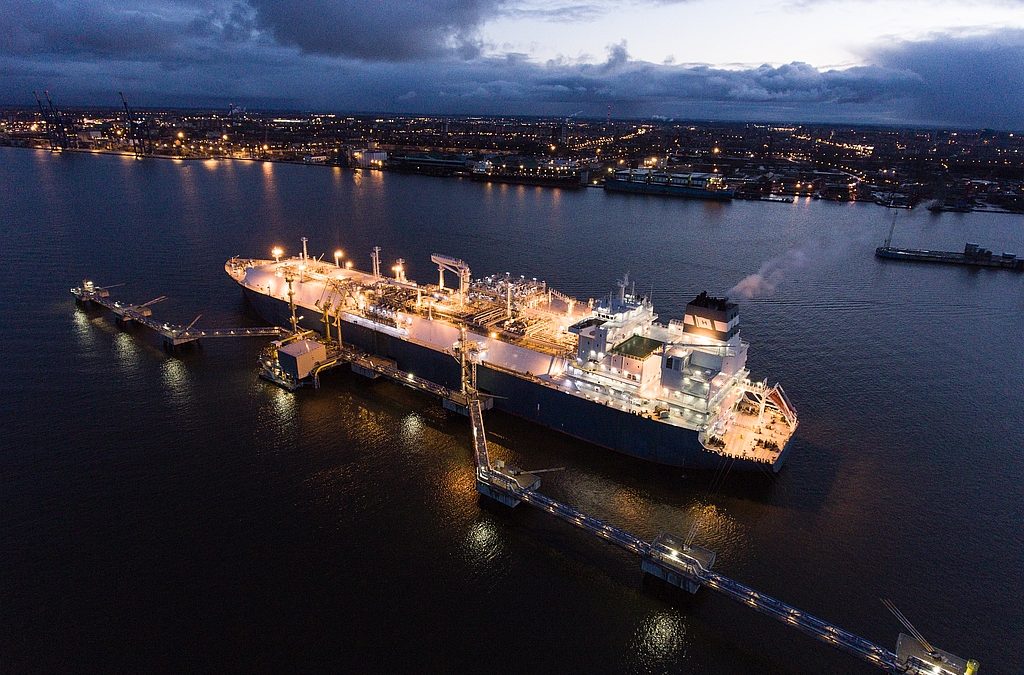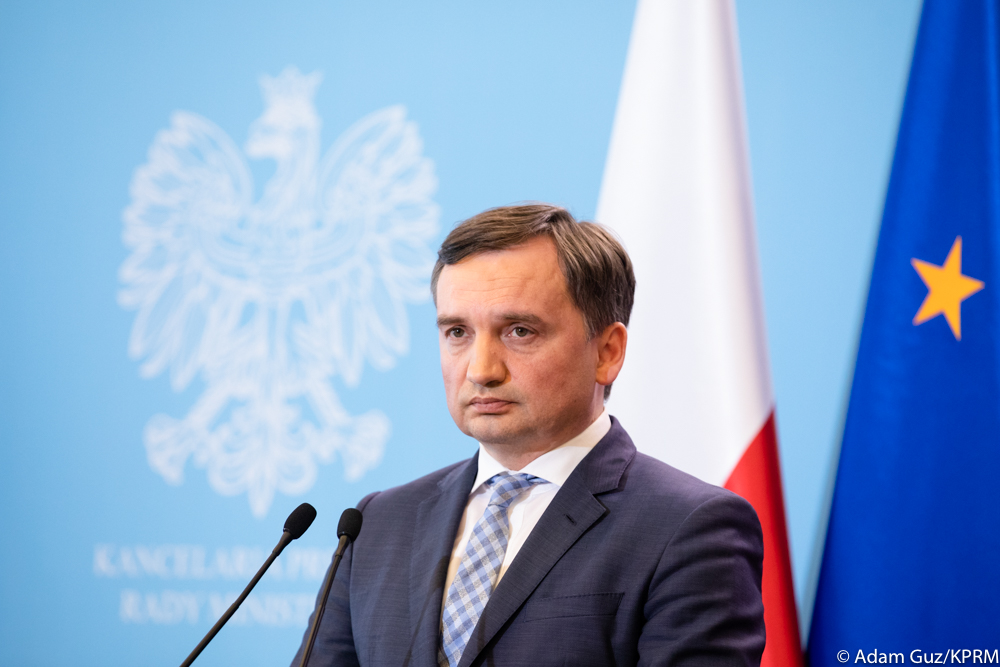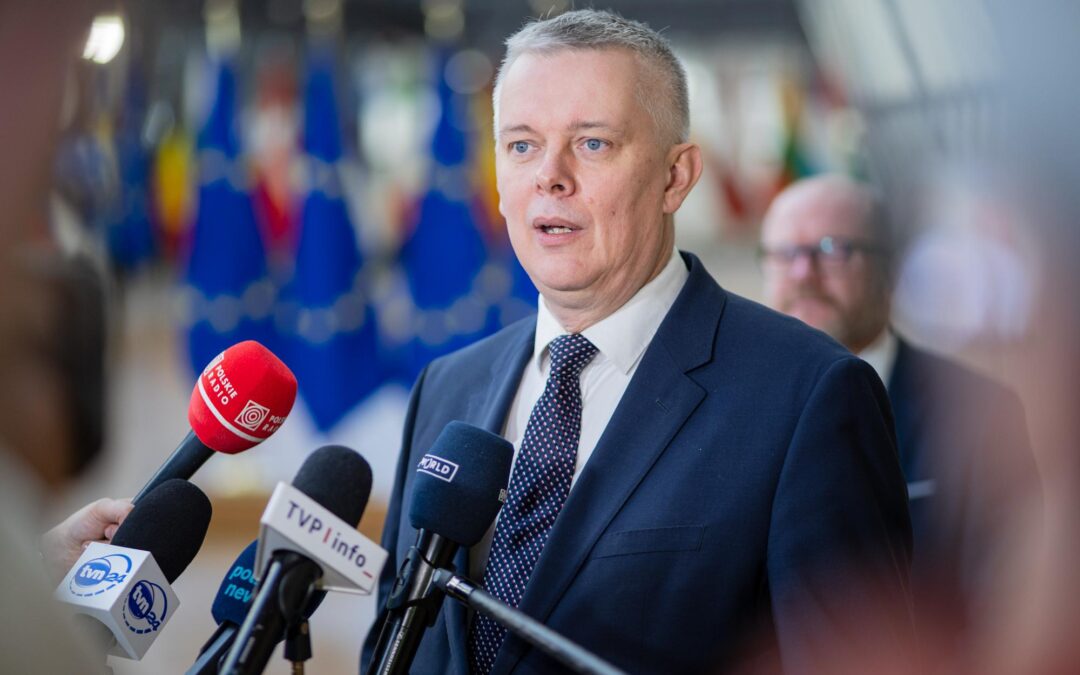Poland has announced that, due to interest from its landlocked neighbours Slovakia and the Czech Republic, as well as Ukraine, it will double the size of its planned floating terminal for receiving, storing and regasifying liquefied natural gas (LNG).
As part of its efforts to diversify away from Russian energy supplies – which began long before the invasion of Ukraine – the Polish government has for years intended to build a floating storage regasification unit (FSRU) in the port of Gdańsk on the Baltic coast.
The war in Ukraine has accelerated and expanded those plans, deputy infrastructure minister Marek Gróbarczyk confirmed in early March, when the aim was to have the FSRU operational by 2027-28 with an initial capacity of 6.1 billion cubic metres (bcm) a year.
However, speaking today at a congress in Lublin held as part of the Three Seas Initiative – a regional development forum – Poland’s energy and climate minister Anna Moskwa revealed that the FSRU plans have since been made even more ambitious.
“Due to the growing interest of our southern neighbours, and also of Ukraine, we plan to expand to at least 12 billion cubic metres, which means a large terminal with two vessels,” said Moskwa, quoted by the Polish Press Agency (PAP).
She added that the government was in constant dialogue with the Czech Republic and Slovakia “to work out the final model of connections” to transport the gas to them. It is “also preparing for building connections with Ukraine”.
As part of the longstanding plans to create an FSRU in Gdańsk, Poland had already included an expansion of its gas infrastructure. Separately, it has been preparing planning to open a new gas interconnector with Slovakia later this year.
On a visit to Prague last week, Polish Prime Minister Mateusz Morawiecki pledged that his government would “try to help the Czech Republic become independent from the Russian [energy] blackmailers”, including by “doing everything to make our ports on the Baltic Sea accessible for Czech needs”.
Last month, Gaz-System, Poland’s gas transmission system operator, revealed that it was hoping to have the FSRU completed even earlier than originally planned, perhaps by 2026 or “maybe even faster”, reported the Biznes Alert news service.
In her remarks today, Moskwa also revealed that Poland will be proposing Ukraine as a candidate to join the International Energy Agency (IEA) in Paris next week. “We know that preliminary approval of Ukraine’s admission to this organisation is already in place.”
Poland already imports LNG through its terminal in Świnoujście, which currently has a capacity of 6.2 bcm per year. That is due to rise to 8.3 bcm per year from 2024. A new pipeline, the Baltic Pipe, is due to open this year, bringing up to 10 bcm of Norwegian gas to Poland via Denmark annually.
In May, Świnoujście received a record number of LNG deliveries, six, with five coming from the United States and one from Qatar. Last week, President Andrzej Duda visited Cairo to discuss, among other things, the potential import of LNG from Egypt.
Last month also saw Poland for the first time import gas from Lithuania’s FSRU terminal (pictured at the top of this article) through an interconnector that opened this year between the two neighbours.
Since Russia’s invasion of Ukraine, Poland has been one of the strongest voices internationally calling for other countries – especially its EU partners – to end the import of Russian energy supplies, which it has itself pledged to do by the end of this year.
Main image credit: AB Klaipėdos Nafta/Wikimedia Commons (under CC BY-SA 4.0)

Daniel Tilles is editor-in-chief of Notes from Poland. He has written on Polish affairs for a wide range of publications, including Foreign Policy, POLITICO Europe, EUobserver and Dziennik Gazeta Prawna.




















